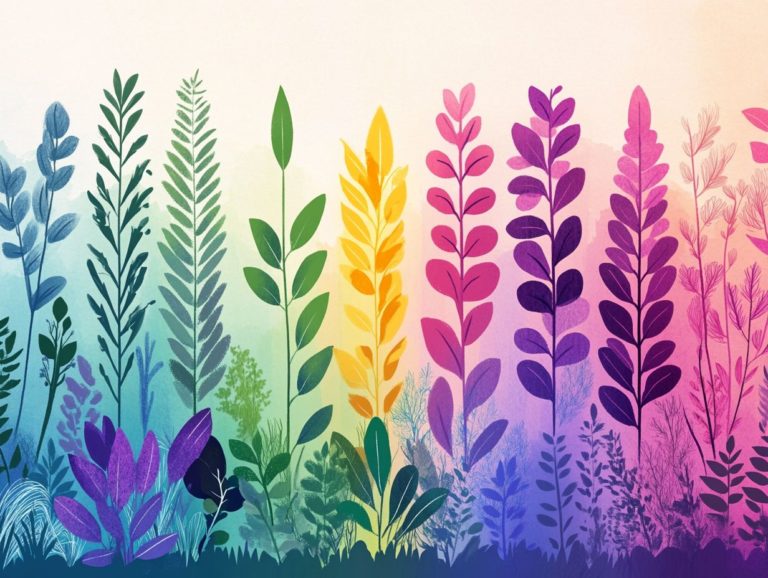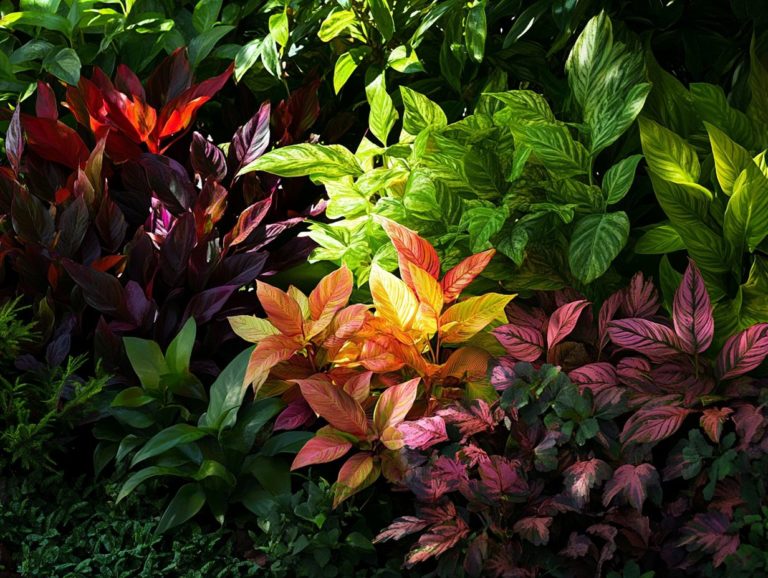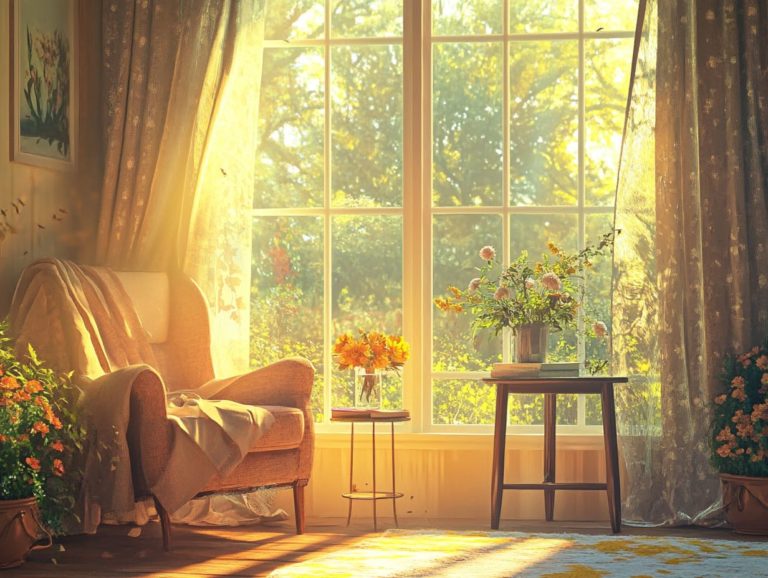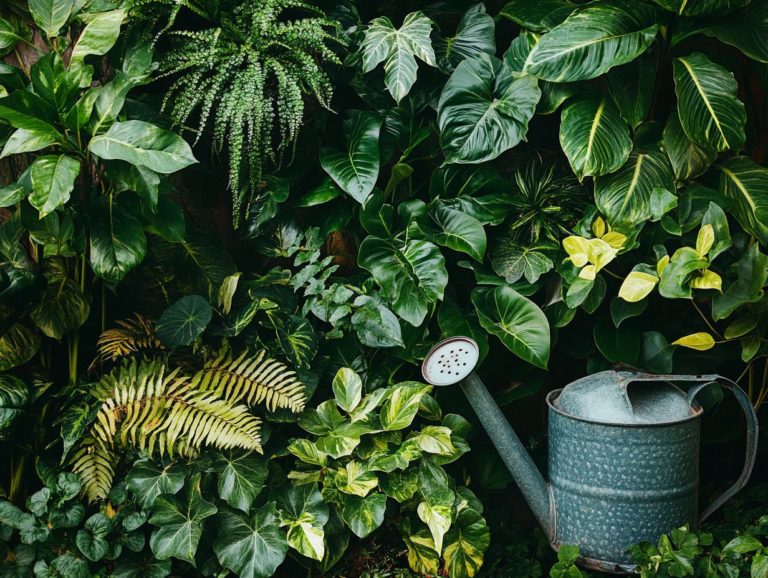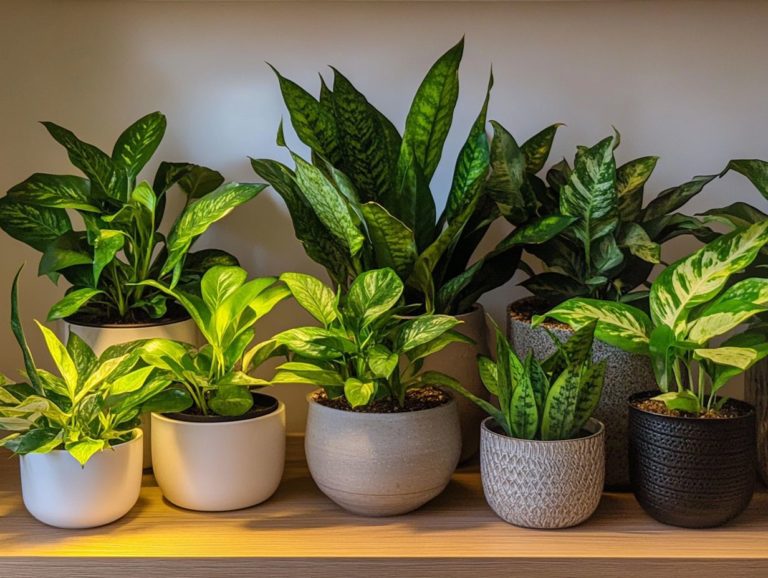How to Use Color Temperature in Plant Care
When nurturing healthy plants, grasping the concept of color temperature can truly transform your gardening experience.
This guide delves into the essentials of color temperature and its crucial impact on plant growth. You ll discover how to select the appropriate light for various plant types, control growth with warm and cool light, and sidestep common pitfalls in plant care.
Don t wait! Understanding color temperature can take your gardening to the next level. Regardless of whether you’re just starting out or have years of experience under your belt, mastering color temperature can significantly enhance your gardening success.
Dive into the exciting world of plant lighting!
Contents
- Key Takeaways:
- Understanding Color Temperature in Plant Care
- Choosing the Right Color Temperature for Your Plants
- Using Color Temperature to Manipulate Plant Growth
- Common Mistakes to Avoid
- Troubleshooting Color Temperature Issues
- Frequently Asked Questions
- What is color temperature and how does it affect plant care?
- How do I determine the ideal color temperature for my plants?
- What types of light sources emit different color temperatures?
- How to Adjust Lighting for Your Plants Using Color Temperature
- Why Use Color Temperature in Plant Care?
- Potential Drawbacks of Color Temperature in Plant Care
Key Takeaways:
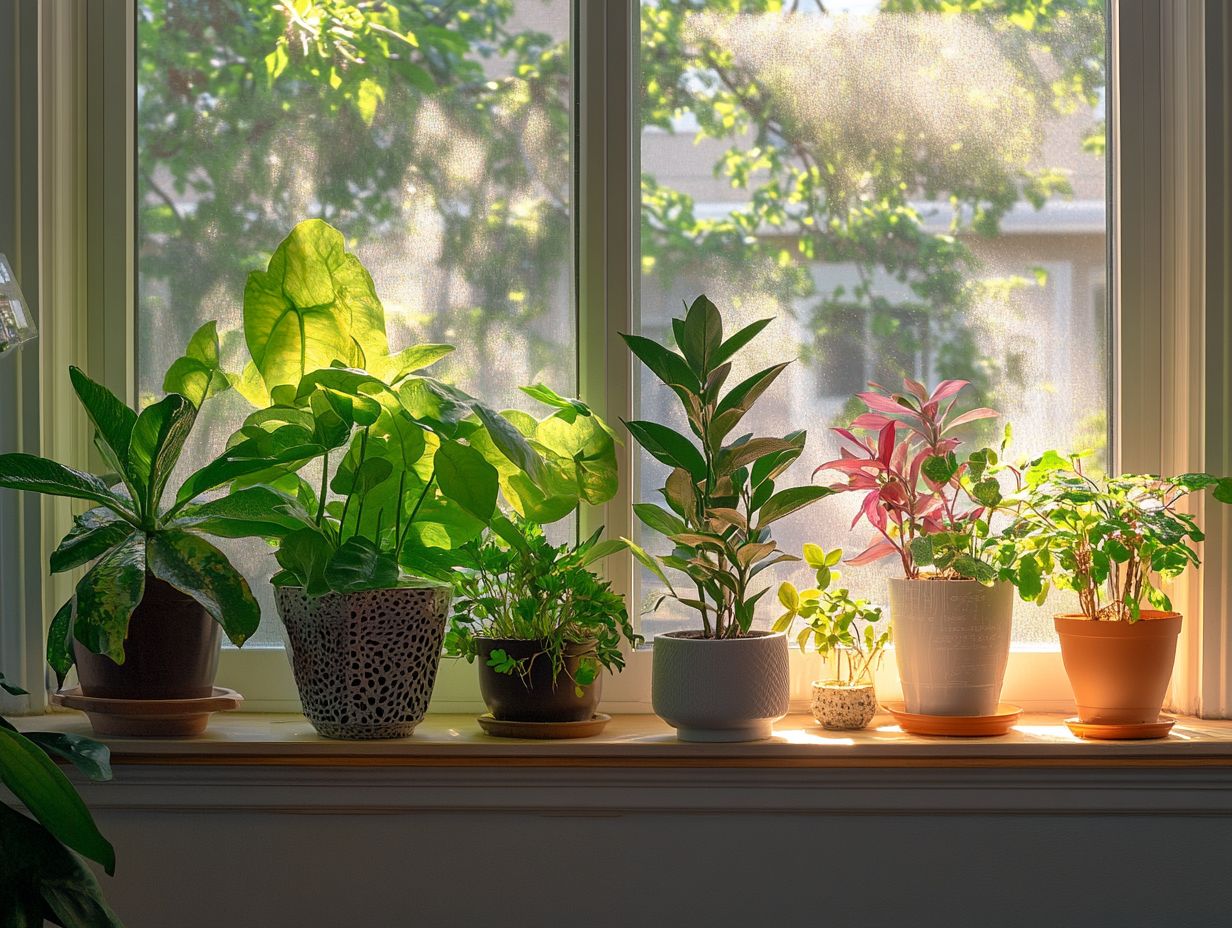
- Understanding color temperature is crucial in plant care as it affects plant growth, development, and health.
- When choosing the right color temperature for plants, factors like natural habitat, growth stage, and light intensity should be considered.
- Manipulate plant growth by using warm and cool light, but beware of common mistakes like misconceptions and harmful effects on plants.
Understanding Color Temperature in Plant Care
Understanding color temperature is essential for optimizing your plant care, particularly when it comes to indoor plants that rely on specific types of light to flourish.
Measured in Kelvin, color temperature influences how plants utilize light for photosynthesis, the process plants use to make food from light, and overall growth. By choosing the right lighting options, such as using smart lights for plant care, you can ensure that your indoor plants receive the correct spectrum of light, which directly impacts their health and growth rate.
What is Color Temperature?
Color temperature refers to the hue of a specific light source, measured on the Kelvin scale, which influences how light emitted by grow lights or other types appears.
This metric is important across various fields, especially in photography, art, and indoor gardening, where the right lighting can dramatically alter your results. Typically, color temperature begins with warm tones around 2700K, which represent standard incandescent bulbs. It then transitions through neutral shades at 4000K, resembling daylight fluorescents, and reaches cooler tones around 6500K, mimicking the bright midday sun.
Each of these temperatures brings unique characteristics to the visible spectrum, impacting mood, functionality, and even plant growth. For example, cooler light is ideal for stimulating photosynthesis in plants, showcasing the practical benefits of grasping this essential concept.
How it Affects Plants
Color temperature plays a critical role in your plants health, directly impacting the photosynthesis process and the efficiency of chlorophyll a production.
Different light spectrums can either enhance or inhibit this essential process, influencing how your plants absorb energy and grow. For example, blue light, which you often find in cooler temperatures, encourages vegetative growth and leafy development by promoting chlorophyll synthesis. On the other hand, red light is key during the flowering and fruiting stages.
These varying wavelengths of light interact uniquely with plant physiology, creating a delicate balance that can either facilitate or hinder efficient photosynthesis. By understanding this relationship, you can optimize light conditions and ensure your plants thrive, fully harnessing the potential of their environment.
Choosing the Right Color Temperature for Your Plants
Selecting the ideal color temperature for your plants is vital for fostering optimal growth and ensuring their overall health. Each type of plant comes with its own unique lighting requirements, so it s critical to choose a color temperature that aligns perfectly with their needs.
By utilizing full-spectrum bulbs, you can guarantee that your plants receive a balanced light spectrum, ultimately enhancing their growth rates and bolstering their resilience against diseases.
Factors to Consider
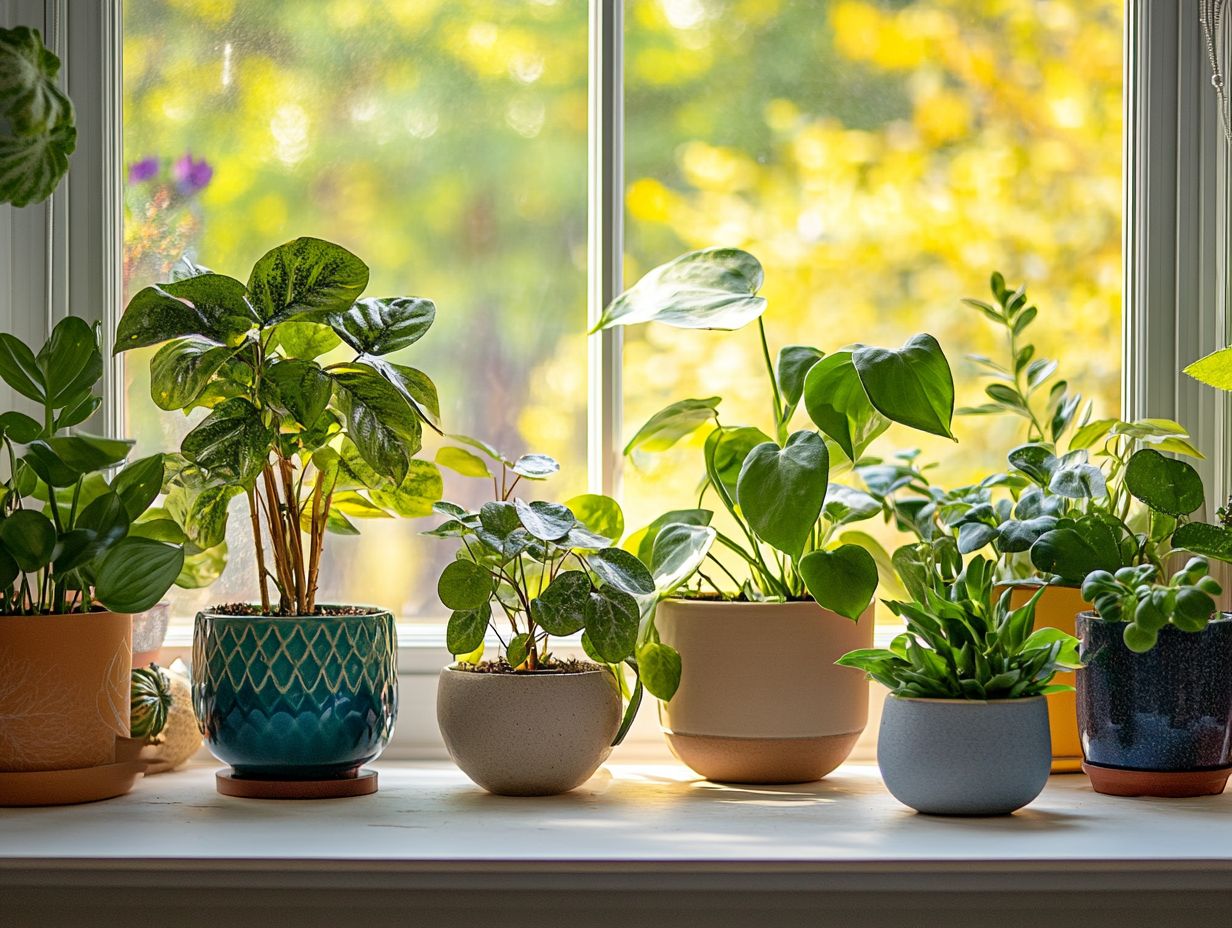
Select the right color temperature for your plants. Focus on their light needs, fixture height, and daily light duration.
Different plants prefer different light colors. For instance, flowering plants thrive in warmer temperatures, between 2700K and 3000K, enhancing their blooming potential. Foliage plants do better in cooler temperatures, around 5000K to 6500K, which mimic natural daylight. To ensure your plants receive the right light, check out this guide on how to use light meters for plants.
The height of your light fixtures matters. Positioning them too high reduces light intensity and spread, diminishing effectiveness. Furthermore, the duration of light exposure each day significantly influences your plants’ growth and health.
Recommended Color Temperatures for Different Types of Plants
Plants require different color temperatures to thrive. Healthy plants need a balance of light tailored to their needs.
For example, succulent species flourish under warm color temperatures, typically between 2700K to 3000K, mimicking gentle sunlight. On the other hand, leafy greens and herbs, like basil and spinach, benefit from cooler temperatures between 5000K and 6500K, promoting vigorous foliage growth.
Flowering species, such as tomatoes and petunias, thrive when exposed to both warm and cool spectrums, ideally between 4000K and 6000K, enhancing their blooming processes. Knowing these needs helps you choose the right grow lights.
Using Color Temperature to Manipulate Plant Growth
Using color temperature wisely can boost plant growth. By adjusting the balance of warm and cool light, you can enhance growth rates and overall plant health.
How to Use Warm and Cool Light to Influence Plant Growth
Combine warm and cool light to boost plant growth effectively. This combination maximizes how plants convert light into energy.
Warm white light, typically between 2700K to 3000K, mimics the glow of early mornings and sunsets, promoting flowering and nurturing growth. In contrast, cool light, usually around 5000K to 6500K, supports vegetative growth and enhances leaf development, which is vital for capturing sunlight efficiently. For a deeper understanding, explore the science of light and plant care.
By integrating full-spectrum LED lights that emit both warm and cool wavelengths, you’ll create an ideal environment. This setup boosts chlorophyll production and encourages robust root systems, leading to a more bountiful harvest.
Common Mistakes to Avoid
Avoid common mistakes with color temperature to protect your plants. Knowing these details ensures your plants get the right lighting to thrive.
Misconceptions About Color Temperature in Plant Care
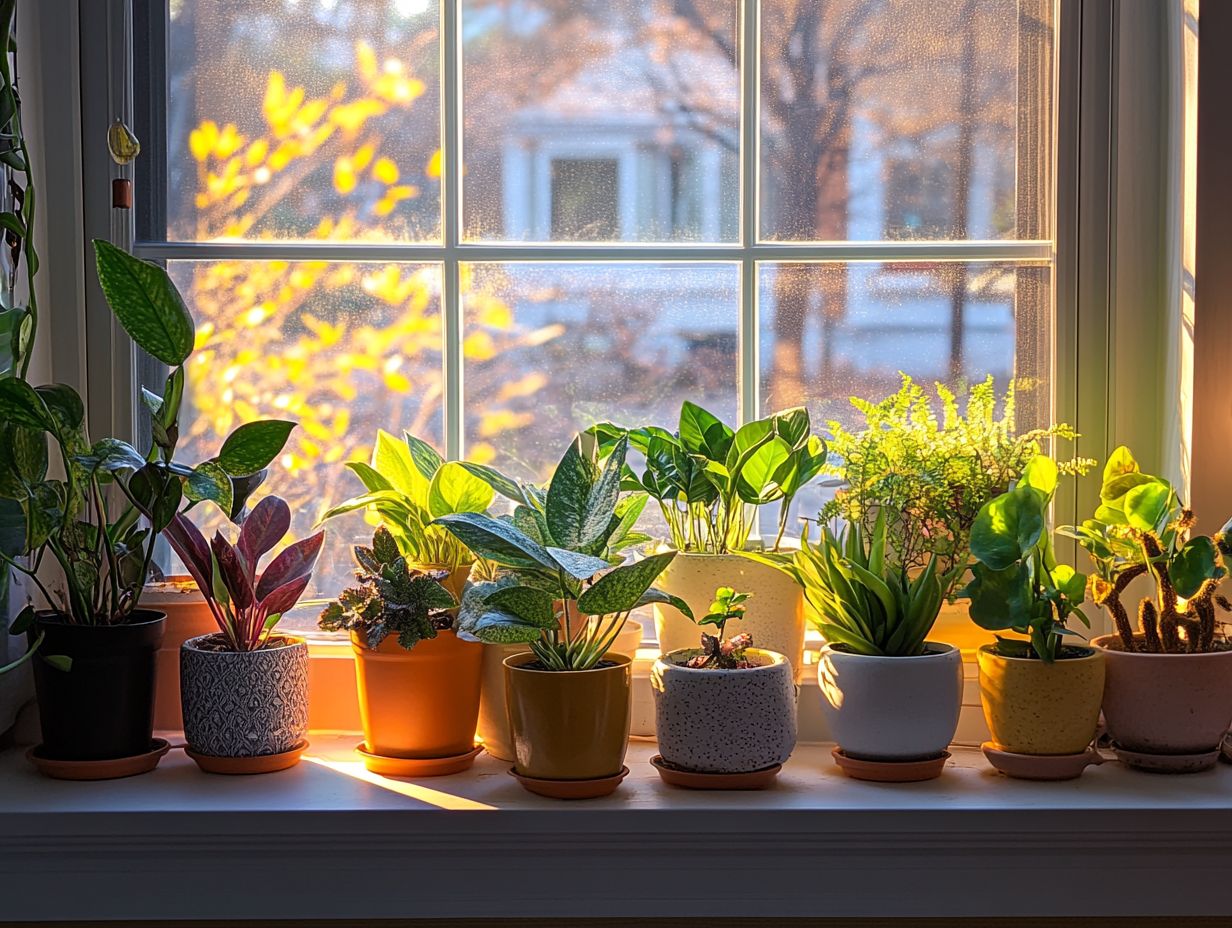
Several misconceptions about color temperature in plant care can lead you to make less-than-ideal lighting choices. Ultimately, these choices impact the health and growth of your plants.
Many garden enthusiasts think higher color temperatures mean brighter light. They often forget that the quality of light matters more than just how bright it is.
For example, blue light around 6500K (a measurement of color temperature) is often linked to plant growth. However, not all plants thrive under these conditions.
On the flip side, warmer temperatures near 3000K can encourage flowering in certain species. Many gardeners shy away from them, fearing they provide insufficient light.
Understanding how varying color temperatures affect photosynthesis and overall plant vitality is crucial for cultivating a thriving indoor garden.
Avoiding Harmful Effects on Plants
To keep your plants healthy, avoid harmful effects from improper lighting. Effective strategies can transform your growing experience!
Adjusting the color temperature of your lighting sources is vital. It ensures your plants receive the crucial wavelengths needed for photosynthesis.
For example, using a blend of blue light during the vegetative stage encourages lush foliage. Meanwhile, higher ratios of red light during flowering enhance bud development.
Regularly monitoring light intensity with light meters allows you to catch any fluctuations that could hinder your plants performance.
Understanding the specific light requirements of each plant species is vital. This enables you to adapt your lighting setup and create an environment where your plants can thrive.
Troubleshooting Color Temperature Issues
Troubleshooting color temperature issues is essential for ensuring your indoor plants receive the best lighting. By addressing these concerns, you can create a thriving environment that supports the well-being of your plants.
Identifying and Solving Problems with Color Temperature
Identifying and addressing color temperature issues can significantly enhance plant growth. This ensures their lighting needs are effectively met.
By evaluating the light spectrum emitted from your grow lights, you can uncover potential problems that may hinder your plants’ development.
For example, if you observe stunted growth or yellowing leaves, it may signal that the lights are too warm. This can result in a lack of the essential blue light required for robust vegetative growth.
On the flip side, insufficient warm light during the flowering stages can lead to disappointing bloom quality.
Utilizing a color temperature meter allows you to accurately assess this critical aspect. By adjusting your light fixtures or replacing bulbs with those that better align with the necessary spectrum, you can significantly improve overall plant health.
This leads to lush foliage and vibrant blooms!
Frequently Asked Questions
What is color temperature and how does it affect plant care?
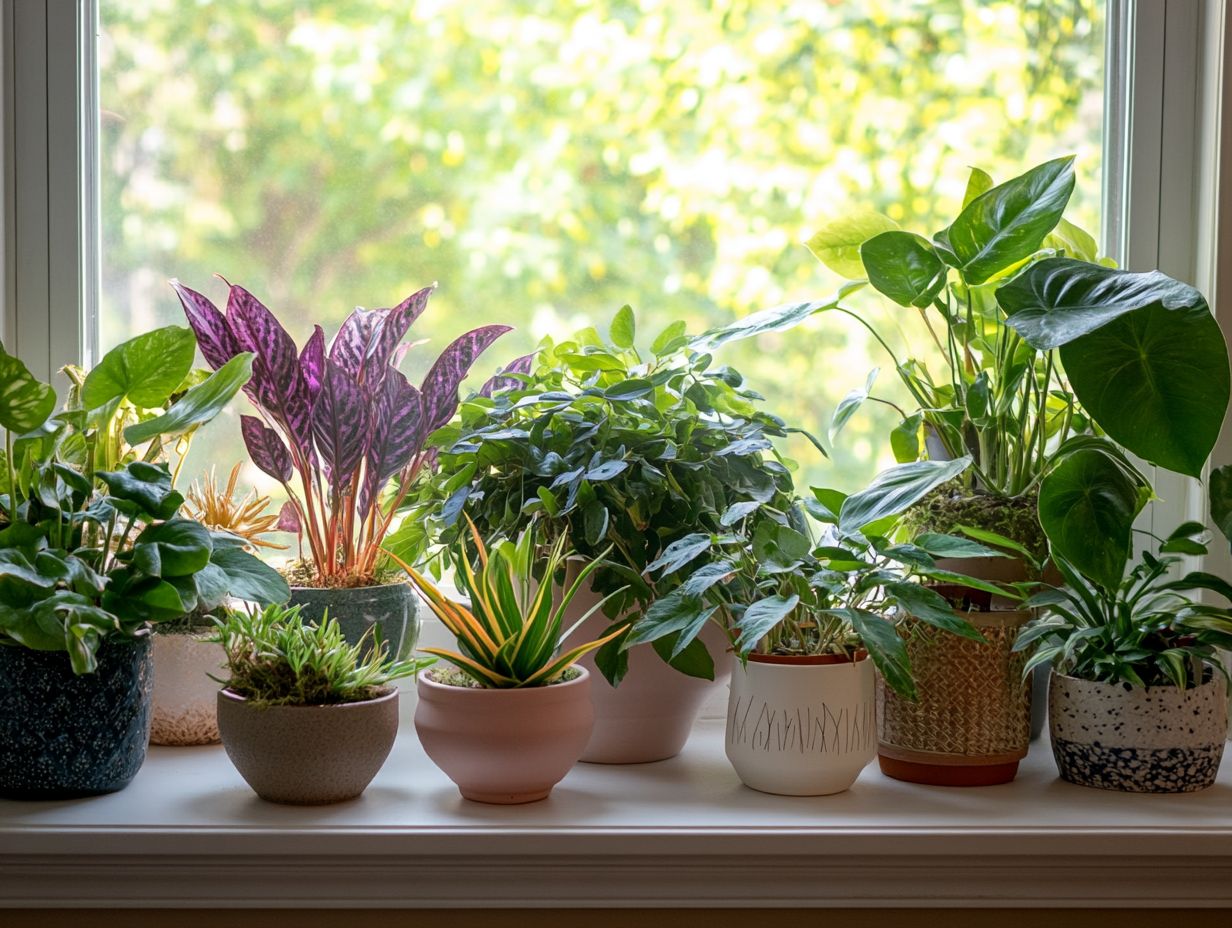
Color temperature is a measurement of the color appearance of a light source, ranging from warm reddish tones to cool bluish tones. It affects plant care by influencing plant growth and development, as different color temperatures can stimulate different responses in plants.
How do I determine the ideal color temperature for my plants?
The ideal color temperature for your plants depends on their stage of growth. Generally, cooler color temperatures (5000K-6500K) are suitable for vegetative growth, while warmer color temperatures (2700K-3500K) are better for flowering and fruiting stages.
What types of light sources emit different color temperatures?
Natural sunlight emits a color temperature of around 6500K, making it ideal for plant growth. Artificial light sources such as LEDs, fluorescents, and incandescent bulbs can vary in color temperature depending on their design and purpose.
How to Adjust Lighting for Your Plants Using Color Temperature
To adjust the lighting for your plants, use bulbs with different color temperatures. You can also change the color temperature of your current bulbs or use filters and grow lights that let you adjust the settings.
Why Use Color Temperature in Plant Care?
The right color temperature can help your plants grow healthier and boost flowering and fruiting. It can also make your plants more resistant to pests and diseases while saving you money on energy bills.
Potential Drawbacks of Color Temperature in Plant Care
While color temperature can benefit your plants, using the wrong type can harm them. High color temperatures used too long can stunt growth and increase pest problems, so it’s crucial to know what your plants need.

